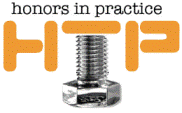National Collegiate Honors Council

Honors in Practice Online Archive
Date of this Version
2019
Document Type
Article
Citation
Honors in Practice, Volume 15, 2019
Abstract
My children like to say that it is dangerous to ride on a plane or even an elevator with me. They know that, at some point, after the doors have closed or the seat belts are fastened, I am going to start talking about honors. As NCHC president this past year, I have had the honor to speak with a great many people about honors and, especially, to address the false dichotomy between “high ability” students, on the one hand, and those who have “high financial need” or are considered in some way “high risk”—students who are from low-income families or underrepresented groups or who have disabilities or who are first in their families to attend college. In airplanes and on elevators and on campuses and in organizational offices, I like to tell folks that NCHC member institutions are public and private, secular and faith-based, two- and four-year, R1s and PUIs. They are HBCUs and HSIs. They are in The Netherlands and China and Siberia and Alaska and Boston. Honors students come from all academic disciplines and are citizens, undocumented, first-generation, and veterans. They are LGBTQA, as well as Straight, they are cisgender, transgender, and non-binary, and they represent the full spectrum of racial and ethnic diversity in this country.


Comments
Copyright 2019 by the National Collegiate Council